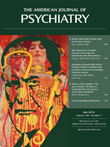The Age of Insight: The Quest to Understand the Unconscious in Art, Mind, and Brain, from Vienna 1900 to the Present
Although as clinicians and psychiatrists we most often focus on how and when the mind “goes awry”—thereby leading to the expression of mental illness—the seminal work of Dr. Eric Kandel, Director of the Center for Neurobiology and Behavior at Columbia University and 2000 Nobel Prize laureate, reminds us that understanding how the mind works in all its richness of memory, perception, emotion, and creativity remains as great a challenge to neuroscience and to society/humanity at large. This resonates as a central theme of Dr. Kandel's latest book.
You may ask what has Vienna circa 1900 got to do with modern day neuroscience and with creativity? Most of us associate Vienna at that time only with the work and teachings of Dr. Sigmund Freud. However, what Dr. Kandel describes in his latest book is a much richer interplay between the great resource of Viennese medicine, the emergent field of psychoanalysis, and leading artists who were each in their own work essentially trying to figure out key human experiences of memory, arousal, perception, and sensuality.
The book skillfully intertwines gems from this golden era of artistic talent in Vienna early in the last century alongside fundamental contributions to the workings of the brain. The book centers around the rich opportunity and culture created by Dr. Sigmund Freud, Dr. Arthur Schnitzler (a novelist and physician), Gustav Klimt (a remarkable painter), and two other painters of that period, Oskar Kokoschka and Egon Schiele. By chronicling their experiences as well as their thinking about creativity, Dr. Kandel provides us with a remarkable confluence of art, psychology, and the biology of the brain.
Dr. Kandel's own frame of reference for this work also becomes apparent as you read the book. First, Dr. Kandel was born in Vienna in 1929 and immigrated with his family to the United States early in his childhood. There is a sense of romanticism that echoes through the book in that he left his home town and country at a time of great discovery and intellectual creativity. Additionally, Freud and others worked on the expression of memory, the very area that Dr. Kandel has left his own indelible work on neuroscience. There is a certain interplay described in the book between Klimt's artistic efforts to display and reveal sensuality, yet how this is still to an extent suppressed and rendered in his paintings in a manner “acceptable” to Viennese culture at that time. Juxtaposed with that is Freud's work on memory and the effects of repressed memory.
At first glance, the work of Dr. Kandel as an expatriated fellow Viennese may seem disparate from this golden age. Yet Dr. Kandel has focused on the neuroscience of memory, habituation, and neural plasticity in explaining key human experiences. His seminal work of memory has been based on elegant experiments on the most simple of animals—the sea snail Aplysia. He has studied how cells make memory “traces” in the short term and how in long-term memory cells make new connections and grow, expressing new genes and cellular reconfigurations. In The Age of Insight, these findings are described alongside other classical experiments in an effort to collectively tease out from multiple domains (of neuroscience, art, and the humanities) how we understand the most basic human experiences of touch, sight, smell, memory, and emotionality. It is clear that Dr. Kandel derived inspiration from the work of these giants of Viennese culture. The book is also, to some extent, a “call to arms” for neuroscientists to embrace the full breadth of artistic talent in our attempts to understand the mind. To a certain extent, Dr. Kandel gives the impression that we are as scientists just one member of a diverse [but yet “virtual”] brain discovery team that is studying (in so many complementary ways) how the mind works.
The early chapters in the book tell the stories of each artist, depicting key events and experiences that shaped their work. There is an emphasis—albeit not exclusive—on the expression of emotionality and sexuality. The book then details, in terse fashion, the brain processes that underlie perception as well as the psychology of vision. Classical works are skillfully juxtaposed with recent seminal publications, including most recent magnetic resonance imaging studies of the neurology and recognition of facial expressions. Modern theories of cortical arousal are described. Dr. Kandel also teases out the biology of our innate response to viewing a work of art. The book also covers the relatively sparse literature—including the seminal contributions of AJP Editor Emerita Dr. Nancy Andreasen—on the neurobiology of creativity itself.
Dr. Kandel, who received the 2000 Nobel Prize in Physiology or Medicine for his formative work on memory, is a preeminent neuroscience leader. What makes this book work is also his depth of knowledge and appreciation of art. Dr. Kandel possesses a unique ability to describe for us how each informs the other. This is a remarkable book. It is a delight to read. Please know that however pleasing this book is, it is not “lite” and the reader will work hard to assimilate all the artistic nuances as well as the intricacies of neuroscience. That said, the enthusiast will be well rewarded with a great appreciation of life, art, and the mind….who doesn't want that!



